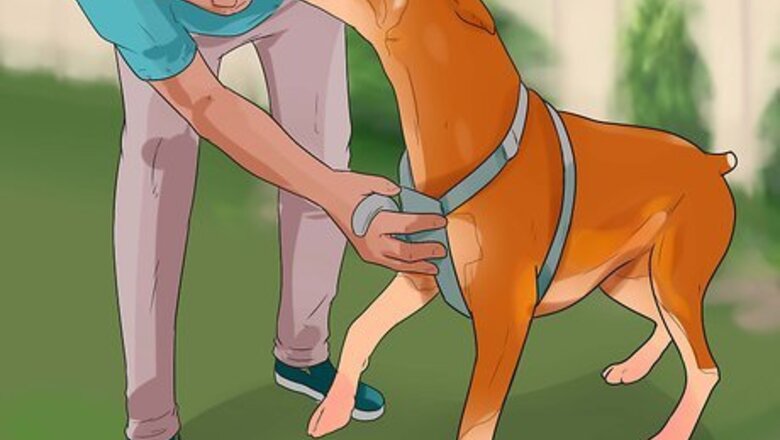
views
X
Expert Source
Dominik FeichtnerDog Trainer & Behaviorist
Expert Interview. 18 March 2021.
This drive can be very high in some dogs. When it’s turned on, nothing else will matter in the dog’s environment except his prey (in this case, a squirrel).[2]
X
Research source
If your dog has a penchant for chasing and killing squirrels, his high prey drive is a danger not just to the squirrel, but to himself as well. It will be your job to manage this drive and his environment to stop him from killing squirrels. While you can't remove a dog's prey drive, you can redirect their focus and teach them to listen to you.[3]
X
Expert Source
Osama MaghawriProfessional Dog Trainer
Expert Interview. 9 September 2020.
Stopping Your Dog from Killing Squirrels in Your Yard
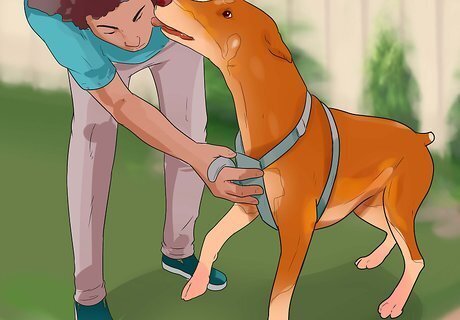
Put a leash on your dog when you take him out to your yard. To stop your dog from killing squirrels, you will need to train him carefully and manage his environment. If your yard is the problem area, put your dog on a leash, take him out to the yard, and give him different obedience commands ('sit,' 'stay'). Do this for about a month, rewarding him each time he correctly responds to your commands. If your dog is already familiar with these commands, you will not need to practice them outside for a full month. Your dog may need only a few days of practice doing the commands on a leash. Reward your dog with treats and/or verbal praise each time he correctly follows your commands. Add some fun to these training sessions by giving your dog toys he can easily play with while on the leash, such as Kong toys.
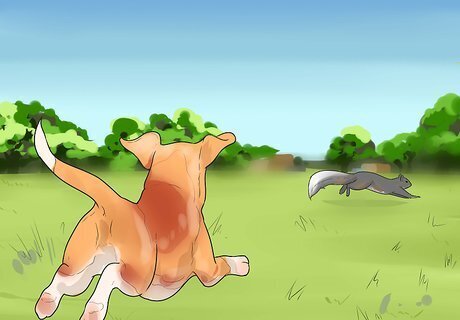
Allow your dog to chase the squirrel. Take your dog out to the yard without his leash on. If he sees a squirrel, let him chase after it as the squirrel races up a tree. This probably sounds counterintuitive: if you want your dog to stop going after squirrels, why should you encourage him to do that very thing? No need to worry—you are fostering the prey drive only initially. This strategy will work well if you have trees in your backyard. If you do not have trees, do not allow your dog to chase after the squirrel—he could very well catch it and kill it. If the squirrel runs up a tree, your dog could sit under the tree for hours, waiting for the squirrel to come down. With your dog at a standstill, this would be the opportunity for you to divert his attention away from the squirrel. Have his leash with you.
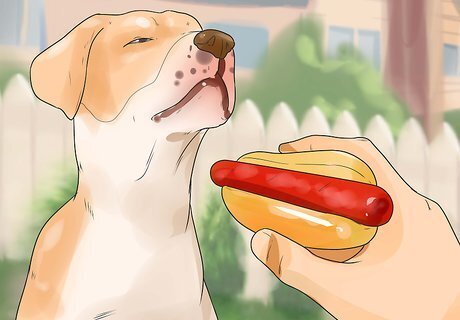
Distract your dog with the scent of food. Break your dog’s rapt attention on the squirrel by wafting the scent of tasty food (e.g., chicken, hot dog) near his nose. Keep the food hidden in your hand so he only detects the food. When your dog turns his attention towards you, open your hand and give him the food. Put the leash on your dog as he’s munching on the treat.

Walk your dog back into the house. With your dog sufficiently distracted from the squirrel, walk about 10 feet away from the tree. If your dog is not sitting already, command him to sit and stay. Next, take his leash and walk him back into the house. With enough repetition, your dog will learn that you can control his prey drive and thus stop him from killing squirrels. Go through this process each time your dog sees a squirrel in your yard.
Managing Your Dog’s Prey Drive During Playtime and Walks

Play games with your dog that mimic chasing prey. If your yard is not the problem area, try managing his prey drive through games at home and distractions during his walks. This may take some work, but it can be fun. Games that foster your dog's natural prey drive encourage him to use that drive for play, rather than actual hunting. Play Frisbee and hide-and-seek with your dog. You could also play fetch with your dog. Find an exercise toy that has a sheepskin lure tied to the end of what looks like a fishing pole. Using this toy with your dog could keep him entertained for long periods. During your outdoor playtime, try to choose a time when you know squirrels will not be around. If squirrels are a constant problem, choose games that you can play indoors.
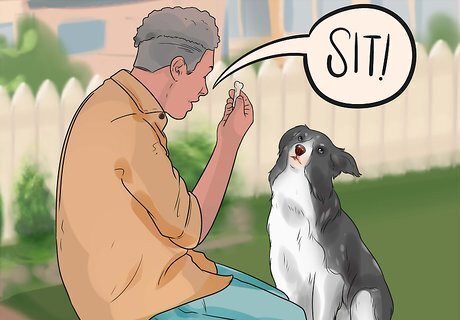
Instruct your dog to sit and stay during playtime. Playtime is fun, but it can also be instructional. For example, if you are playing fetch with your dog, tell him to ‘sit’ and ‘stay’ when you throw the ball, then give him a release command (‘go’) to allow him to chase it. By giving him commands, you are controlling his instinct to chase after something right away. Give your dog positive reinforcement (treats, verbal praise) when he sits and stays. When your dog responds to these commands during ‘low-distraction’ playtime, start practicing them when you go out for walks where there will likely be more distractions. The goal is to manage his prey drive such that he focuses his attention on you, rather than on a squirrel.
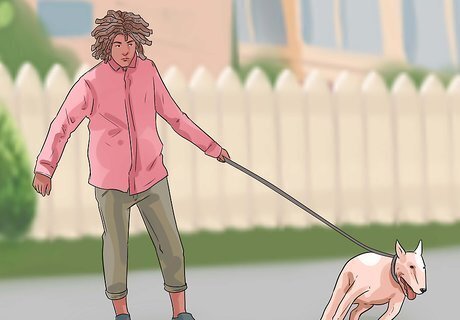
Keep a tight hold on your dog’s leash during his walk. If your dog has a habit of breaking away from you during a walk to go after a squirrel, try to hold onto his leash more tightly. Although keeping a tighter grip will manage your dog’s prey drive by not allowing him to bolt, it may not be an effective long-term solution (and may tire your arm out after a while). There a few other things you can do to manage your dog’s prey drive during a walk. Distract your dog with a noise. Bring a squeaky toy with you so that, as soon as your dog sees a squirrel (or if you notice it before he does), you can make a noise that will snap him out of his prey drive trance. Block your dog’s movement with your body to prevent him from chasing after the squirrel. You can also move your dog sideways and away from the direction of the squirrel, making sure not to pull the leash as you move him away. Try adding variation to your walk: change your pace, switch directions randomly, and make detours. All of these sudden changes will force your dog to pay more attention to what you’re doing, and less attention to something he can chase. Touch your dog to distract him. This will probably startle your dog the first time, but he will eventually get used to the touch, making it an ineffective long-term strategy to manage his prey drive.
Keeping Squirrels Out of Your Yard
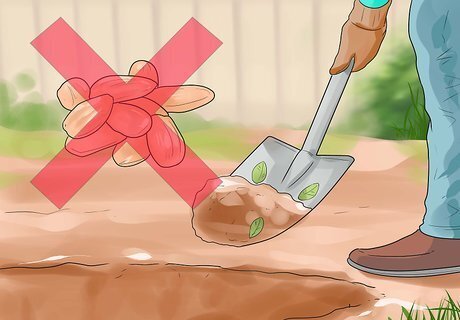
Remove food sources. A good way to stop your dog from killing squirrels is to keep them out of your yard in the first place. That will be a win-win situation for your dog and the squirrel! Remove food, such as acorns, from your yard that would be attractive to squirrels. Rake up any nuts and berries, and remove any leftover food (human or pet). Bird feeders are very enticing for squirrels, so it would be a good idea to remove them from your yard. If that is not practical, replace the birdseed with something that squirrels do not like, such as safflower.

Keep your tree limbs short. Another way to keep squirrels out of your yard is to limit their access. If your trees have long branches, cut the branches so squirrels cannot use them as launching pads onto your roof or into your yard. Squirrels can leap about 10 feet, so cut the limbs such that the distance between the tree and your yard is more than 10 feet.
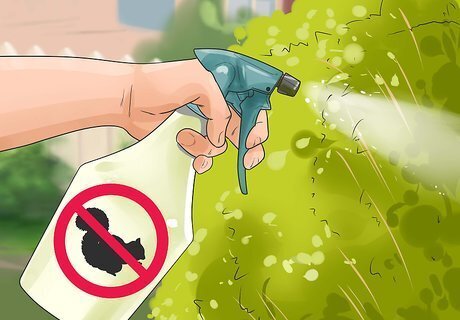
Make your garden undesirable to squirrels. If the squirrels keep finding a way into your yard, try to make your yard more undesirable to them. For example, bury orange or lemon rinds just beneath the soil in your garden to repel the squirrels. You can also sprinkle some garlic powder or cayenne pepper in the soil just before your plants bloom to keep squirrels away. Certain plants, such as the Crown Imperial flower, can be deterrents to squirrels. You could also spray commercially available squirrel repellent in your yard.
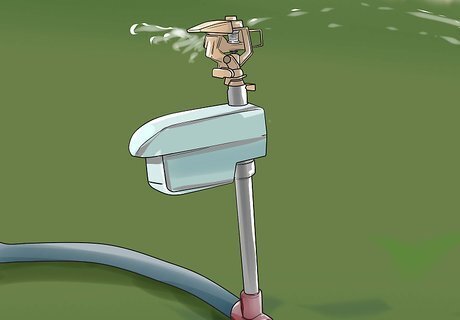
Install a motion-activated sprinkler in your yard. If all else fails, squirrels will definitely dislike being the unwitting victims of a sudden burst of water. Place the sprinklers in areas where squirrels tend to frequent in your yard, like the garden. It probably won’t take long for squirrels to avoid your yard almost entirely.

Contact a professional animal removal service. If squirrels continue to frequent your yard, or if you do not have the time to implement your own squirrel-removal strategies, consider contacting a professional company to do the job. It may cost anywhere from a few hundred to over a thousand dollars, depending on the extent of the squirrel problem.


















Comments
0 comment